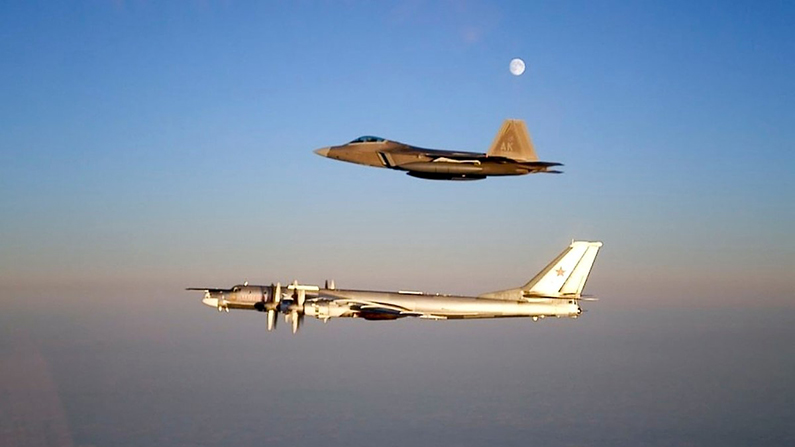Two Russian strategic bombers flew close to U.S. airspace on February 6. According to Russia’s Defense Ministry, the Tu-95MC strategic bombers came close to waters near the state of Alaska.
The Tu-95s, known as Bears by NATO, were escorted by SU-30SM fighter jets and flew for around nine hours in the Alaska Air Defense Identification Zone (ADIZ) but stayed in international airspace, the Ministry reported.
The four-engine Tu-95 with contrarotating propellers is the Russian counterpart to the American B-52.
The area, which is monitored for the event of hostile actions, stretches roughly 150 miles from the U.S. coast. The flight, which took place over the Bering and Chukchi Seas, was reportedly fully compliant with international airspace rules.
“The flight was carried out in strict accordance with international rules for the use of airspace,” said Lieutenant General Sergei Kobylash, Commander of Russian long-range aviation.
According to a statement by The North American Aerospace Defense Command (NORAD), the planes were detected in the ADIZ but “did not enter American or Canadian sovereign airspace.”
In 2007, Russian President Vladimir Putin resumed routine strategic bomber patrols beyond Russia’s borders, similar to those during the Soviet Union. About a year ago, Russian military aircraft were detected by U.S. warplanes in a similar scenario on two occasions in the same week.
Despite not posing a distinctive threat to the United States, the presence of Russian military aircraft in the region has recently been making headlines, especially in light of sanctions against Russia over its war effort in Ukraine, as well as joint military exercises by China and Russia.
Last August, 11 Russian and Chinese warships were detected off the coast of Alaska in nearby international waters, prompting a U.S. Navy response of sending destroyers to the Alaskan coast, near the Aleutian Islands, CBS reported.
The joint Sino-Russian exercise was noted by Alaskan Republican senator Dan Sullivan as being unprecedented in scale.
Meanwhile, according to NORAD, “a layered defense network” of satellites, ground-based and airborne radars, and fighter jets is working 24 hours a day, seven days a week, to track and identify aircraft in the region capable of detecting any activity in and near North American airspace.
“The region maintains readiness to conduct a continuum of aerospace control missions. They include daily air sovereignty in peacetime, contingency and/or deterrence in times of tension, and active air defense against manned and unmanned air-breathing airborne vehicles in times of crisis. Aircraft assigned under operational control of ANR contribute to the daily air sovereignty mission and could be used for deterrence and/or air defense missions as required,” NORAD states on its website.
Reuters contributed to this report.


